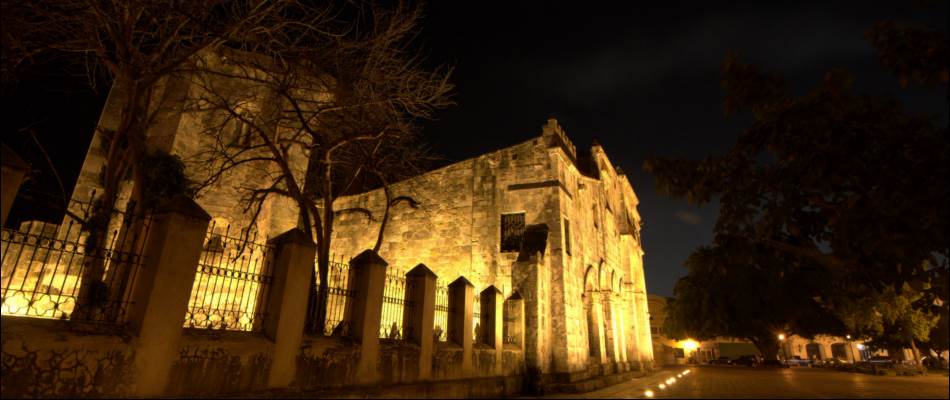Santo Domingo, Dominican Republic – The Soul of the Caribbean
Click here to view Properties for sale in Santo Domingo
Population: 3.8 million, including the metropolitan area Language: Spanish, English is widely spoken Currency: Dominican Peso and US Dollars
Santo Domingo is the capital and largest city in the Dominican Republic, located on the Caribbean Sea southern shores of the country. The first city of the “New World” offers a vibrant lifestyle—sports feature prominently, as do beaches, fine dining, distinguished nightlife, and café society.
Santo Domingo, or Santo Domingo de Guzmán, is the capital and largest city in the Dominican Republic, located on the southern shores of the country, along the Caribbean Sea. Founded by Bartholomew Columbus in 1496, it is the oldest continuously inhabited European settlement in the Americas and was the first seat of Spanish colonial rule in the New World.
Santo Domingo was the launching pad for much of the exploration and conquest of the New World. The expeditions that led to Hernando Cortes’ conquest of Mexico and Balboa’s sighting of the Pacific Ocean all started from Santo Domingo.
Santo Domingo is the Dominican Republic’s major metropolis and is the largest city in the Caribbean by population.
The city’s most important colonial buildings include the Catedral Santa María La Menor, called La Catedral Primada de América, America’s First Cathedral, which states its distinction; the Alcázar de Colón, America’s first castle, once the residence of Viceroy of the Indies Don Diego Colón, a son of Christopher Columbus; the Monasterio de San Francisco, the ruins of the first monastery in America; the Museo de las Casas Reales, the former Palace of the Governor General and the Palace of Royal Audiences; the Parque Colón (Columbus Park), a historic square; the Fortaleza Ozama, the oldest fortress in America; the Pantéon Nacional, a former Jesuit edifice now hosting the remains of various renowned members of the Dominican Order; and the Iglesia del Convento Dominico, the first convent in America.
Under the Koppen climate classification, Santo Domingo features a Tropical monsoon climate. The average temperature varies little in the city, because the tropical trade winds help mitigate the heat and humidity throughout the year.
The city is the center of economic activity in the Dominican Republic. Many national and international firms have their headquarters or regional offices in Santo Domingo. The city attracts many international firms and franchises due to its geographic location, stability, and vibrant economy.
The infrastructure is adequate for most business operations. A key element that has helped the city thrive and compete globally is the telecommunications infrastructure.
Santo Domingo contains a wide variety of incomes and is characterized by its mostly residential area and its distinguished nightlife. Areas of high development mainly consist of high-end buildings and luxury houses with tall mega-projects marking the city skyline, contrasting with less economically developed areas.
The commercial centers in the city are mostly found in the core of the newly designated commercial and financial center of the city, where large plazas and commercial facilities are found, such as the newest malls built in the city, attracting many of the high-income families.
Their cheerful character is reflected in the vibrant nightlife of the city with a wide variety of restaurants, bars, and cafés. The celebrations held throughout the year, either religious or civil, are highly respected and appreciated by Dominicans, some have become famous internationally.
Renowned landmarks in Santo Domingo include the Calle El Conde, the Puerta de la Misericordia, the Catedral Santa María La Menor (Catedral Primada de América), and the Alcázar de Colón, all of which are located within the Zona Colonial district of the city. This area was declared a UNESCO World Heritage Site in 1990.
Outside of the colonial quarters, the area surrounding the Malecón (seawall) is a vibrant commercial and tourist center.
Other places of interest are Plaza de la Cultura, which houses the city’s most important cultural venues, such as the Teatro Nacional (National Theater) and the Museum of Modern Arts; the Palacio de Bellas Artes (Palace of Fine Arts), a Neoclassical theater that is the permanent home of the Orquesta Sinfónica Nacional (National Symphony Orchestra); the Parque Mirador Sur, a six-square-kilometer park in the southwestern part of the city. Another attraction is the Centro Olímpico Juan Pablo Duarte, a sports complex in the center of Santo Domingo. This complex was used during the 2003 Pan American Games.
The city of Santo Domingo holds the first metro mass transportation facility of the Caribbean Islands. The Santo Domingo Metro is a 15-kilometer underground and elevated system consisting of six proposed lines.
Eastbound of the city, approximately 35 miles or 45 minutes away, is the area of Juan Dolio and Guayacanes, featuring beautiful beaches.
Juan Dolio and its neighbor beach-town Guayacanes are for those who seek a couples or family restful vacation. If you are staying in Juan Dolio, you are equidistant from the culture, shopping, dining, and nightlife of Santo Domingo as well as great beaches, scuba diving, and other attractions.
Those seeking action can head for the area’s casinos, discos, 18-hole golf course, or participate in the water sports programs offered by the many complexes. The Cueva de las Maravillas (Cave of Miracles) should be included in every visit. Within the cave, a collection of pre-Columbian art is artistically lit against stalagmites, tapestries, and pictographs.






